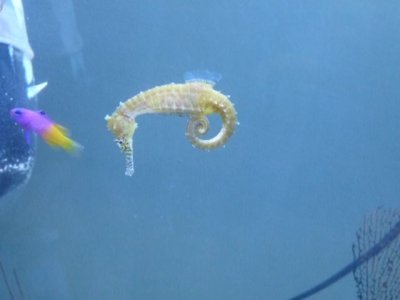ScooterMom
New member
I have a new set up with no protein skimmer. I put my first seahorse in the tank, a male H. barbouri and he must have snicked some air as he came out of the bag. He went straight to the surface and started blowing bubbles. He has gotten worse, and now just floats at the surface upside down. I can't see any air bubbles or bloating.
He has been in a diamox bath for three days now and I don't see any improvement. Any ideas?
He has been in a diamox bath for three days now and I don't see any improvement. Any ideas?

